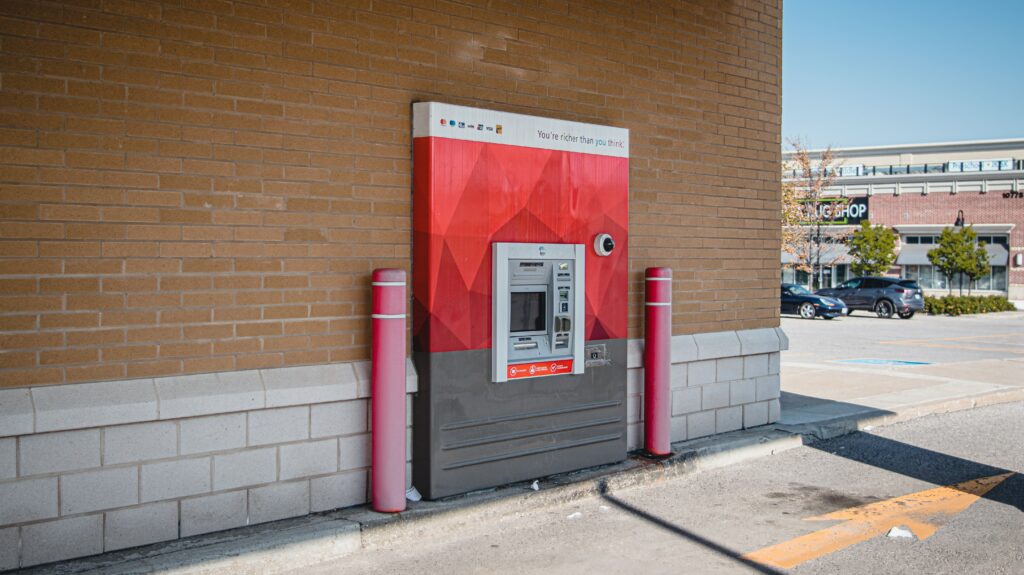
If you find yourself wondering, “Can I refinance my mortgage loan?” you’re not alone. Many homeowners have considered refinancing their mortgage for various reasons. Whether you’re looking to lower your monthly payments, secure a lower interest rate, or consolidate debt, refinancing your mortgage can be a smart financial move. In this article, we will explore the ins and outs of mortgage refinance, helping you understand the process and determine if it’s the right option for you. So, let’s delve into the world of mortgage refinancing and find out if it’s the solution you’ve been looking for.
Table of Contents
What is mortgage refinancing?
Definition of mortgage refinancing
Mortgage refinancing is the process of replacing an existing mortgage with a new loan. This new loan usually has different terms, such as a lower interest rate, a different loan term, or access to home equity. Refinancing offers homeowners the opportunity to receive better loan terms and potentially save money in the long run.
Benefits of mortgage refinancing
Refinancing your mortgage can offer a wide range of benefits. Here are some of the advantages you can enjoy by refinancing:
-
Lower interest rates: One of the main reasons homeowners choose to refinance is to secure a lower interest rate. By refinancing at a lower rate, you can reduce your monthly mortgage payments and save money over the life of the loan.
-
Reduced monthly payments: If you’re struggling with high monthly mortgage payments, refinancing can help ease the burden. By extending the loan term or securing a lower interest rate, you can reduce your monthly payments and improve your cash flow.
-
Shorter loan term: On the other hand, if you want to pay off your mortgage sooner, refinancing can be a smart move. By refinancing to a shorter loan term, you can accelerate your mortgage payoff and potentially save thousands of dollars in interest payments.
-
Consolidating debts: Refinancing can also be an effective strategy for consolidating high-interest debts, such as credit card balances or personal loans. By tapping into your home equity, you can pay off these debts with a lower-interest mortgage loan, saving money in interest charges.
-
Access to home equity: If you’ve built up equity in your home, refinancing can give you access to that equity in the form of cash. This cash can be used for various purposes, such as home renovations, paying for education, or even starting a business.
By carefully considering these benefits, you can determine if mortgage refinancing is the right choice for you.
Determining if refinancing is right for you
Evaluating current interest rates
Interest rates play a crucial role in the decision to refinance a mortgage. Before exploring refinancing options, it’s important to evaluate the current interest rates and compare them to the rates on your existing loan. If rates have dropped significantly since you originally obtained your mortgage, it may be a good time to refinance and secure a lower rate.
Assessing your financial situation
It’s essential to assess your financial situation thoroughly before deciding to refinance. Take a close look at your monthly income, expenses, and overall budget. Consider your job stability and future earning potential. Additionally, evaluate your debt-to-income ratio, which is a measure of your monthly debt payments compared to your gross monthly income. If your financial situation is stable and you can comfortably afford the new mortgage payments, refinancing may be a viable option.
Considering your long-term plans
When contemplating mortgage refinancing, it’s crucial to consider your long-term plans. Are you planning to stay in your current home for a significant period? Or are you considering selling in the near future? If you plan to sell your home within a few years, the cost of refinancing may outweigh the potential benefits. However, if you intend to stay in your home for the long term, refinancing can provide substantial savings over the life of the loan.
Factors to consider before refinancing
Closing costs
One important factor to consider before refinancing is the cost involved. Just like when you originally obtained your mortgage, refinancing comes with closing costs. These costs usually include lender fees, title fees, appraisal fees, and other expenses. It’s essential to carefully evaluate these costs and determine how long it will take for the potential savings to offset the expenses. This brings us to the next factor to consider – the break-even point.
Break-even point
The break-even point is the time it takes for the total savings from refinancing to equal the closing costs. It’s crucial to calculate the break-even point before committing to a refinance. To determine the break-even point, divide the total closing costs by the monthly savings generated by the refinancing. If you plan to sell your home before reaching the break-even point, refinancing may not be the best decision financially.
Credit score
Your credit score plays a significant role in securing favorable refinance terms. Lenders generally offer the best rates to borrowers with good credit scores. Before applying for refinancing, check your credit score and take steps to improve it if needed. Paying your bills on time, reducing your debt load, and avoiding new credit inquiries can help boost your credit score and increase your chances of qualifying for better refinance rates.
Loan-to-value ratio
The loan-to-value (LTV) ratio is another critical factor lenders consider when refinancing. The LTV ratio represents the ratio of the mortgage loan amount to the appraised value of the property. Most lenders prefer a lower LTV ratio as it indicates less risk. To qualify for favorable refinance terms, aim for an LTV ratio below 80%. If your LTV ratio is higher, you may be required to pay private mortgage insurance (PMI), which can increase your monthly payments.
By carefully considering these factors, you’ll be better equipped to make an informed decision about refinancing your mortgage.
Types of mortgage refinancing
When it comes to mortgage refinancing, several options are available to suit different needs. Here are some common types of refinancing:
Rate and term refinance
Rate and term refinancing involves replacing your current mortgage with a new loan that has better terms, such as a lower interest rate or a shorter loan term. This type of refinancing is popular among homeowners who want to save money on interest payments or pay off their mortgage sooner.
Cash-out refinance
A cash-out refinance allows you to borrow against your home equity and receive a lump sum of cash at closing. This cash can be used for various purposes, such as home improvements, debt consolidation, or other financial needs. Keep in mind that by taking cash out of your home, your loan amount and monthly payments will increase.
Cash-in refinance
In contrast to a cash-out refinance, a cash-in refinance involves paying down your mortgage loan balance at the time of refinancing. By bringing in additional cash, you can lower your loan-to-value ratio and potentially qualify for better refinance terms. Cash-in refinancing is an option for homeowners who want to reduce their monthly payments or remove PMI.
FHA streamline refinance
The FHA streamline refinance is a program offered by the Federal Housing Administration (FHA) for homeowners with FHA-insured mortgages. This refinance option aims to simplify the process by reducing documentation requirements and streamlining the underwriting process. FHA streamline refinancing can be an attractive choice for homeowners who want to lower their monthly payments or switch from an adjustable-rate mortgage to a fixed-rate mortgage.
VA Interest Rate Reduction Refinance Loan (IRRRL)
The VA IRRRL is a refinancing option available exclusively to veterans and active-duty military personnel with VA home loans. This program allows eligible borrowers to refinance their existing VA loan with minimal documentation and paperwork. The VA IRRRL can help borrowers secure a lower interest rate, reduce their monthly payments, or switch to a fixed-rate mortgage.

The process of refinancing a mortgage
Finding a lender
To begin the refinancing process, you’ll need to find a lender that offers competitive rates and fits your needs. Research and compare different lenders, considering factors such as their reputation, customer service, and fees. Additionally, gather recommendations from friends, family, or trusted professionals who have recently refinanced their mortgages. Once you’ve chosen a lender, reach out to them to discuss your refinancing options.
Gathering necessary documents
Before applying for refinancing, gather all the necessary documents to complete the application process smoothly. These documents typically include pay stubs, tax returns, bank statements, and any other financial information that lenders may require. Having these documents readily available will help expedite the underwriting process and minimize delays.
Submitting an application
Once you’ve gathered all the necessary documents, it’s time to submit your refinancing application to the lender. Fill out the application accurately and provide all the requested information. Double-check the application for any errors or missing information before submitting it. Be prepared to pay an application fee, which may vary depending on the lender.
Appraisal and inspection
After submitting your application, the lender will order an appraisal of your property to determine its current value. This appraisal is necessary to assess the property’s worth and ensure that it meets the lender’s requirements. Some lenders may also require a home inspection to identify any potential issues or repairs needed. Cooperate with the appraiser and inspector during this process to ensure a smooth appraisal and inspection.
Underwriting
Once the appraisal and inspection are complete, the lender will review your application, documents, and property information during the underwriting process. This process involves a careful evaluation of your financial situation, credit history, and the property’s condition. The lender will verify the information provided and assess the risk associated with refinancing your mortgage.
Closing
If your application is approved, you’ll move on to the closing process. During the closing, you’ll review and sign all the necessary documents to finalize the refinancing. These documents typically include the new loan agreement, the deed of trust, and any other disclosures required by law. Be sure to read and understand each document before signing. Once the closing is complete, the new loan will take effect, and you’ll begin making payments according to the terms of your refinanced mortgage.
Benefits of refinancing
Lower interest rate
One of the most significant benefits of refinancing is securing a lower interest rate. By refinancing at a lower rate, you can save a considerable amount of money over the life of your loan. Even a small reduction in interest rate can result in substantial savings, especially for long-term mortgages.
Reduced monthly payments
Refinancing can help reduce your monthly mortgage payments. If you refinance to a longer loan term or secure a lower interest rate, your monthly payments can decrease significantly. This reduction in payments can free up funds to be allocated towards other financial goals or obligations.
Shorter loan term
If your goal is to pay off your mortgage sooner, refinancing to a shorter loan term can help you achieve that. By switching from a 30-year mortgage to a 15-year mortgage, for example, you can significantly reduce the overall interest paid and own your home outright in a shorter amount of time.
Consolidating debts
Refinancing provides homeowners with the opportunity to consolidate high-interest debts into their mortgage loan. By using your home equity, you can pay off credit card balances, personal loans, or other debts with lower-interest mortgage funds. This can simplify your financial situation, reduce your overall interest costs, and improve your cash flow.
Access to home equity
Another benefit of refinancing is accessing your home equity. By refinancing and taking cash out, you can use the funds for various purposes, such as home renovations, investments, or paying for education. This can be an excellent option for homeowners who have built up equity and want to put it to good use.
Potential drawbacks of refinancing
Closing costs
One significant drawback of refinancing is the presence of closing costs. Just like when obtaining your initial mortgage, refinancing comes with fees and expenses that can add up. These costs can include loan origination fees, appraisal fees, title insurance fees, and more. It’s essential to factor in these costs and consider the break-even point before committing to a refinance.
Extended loan term
Refinancing to a longer loan term to lower your monthly payments can have its drawbacks. While lower payments may be appealing in the short term, extending the loan term can result in paying more interest over time. It’s important to weigh the potential savings versus the overall cost of a longer mortgage term.
Impact on credit score
Applying for refinancing involves a hard inquiry on your credit report, which can temporarily lower your credit score. While the impact is usually minimal and short-lived, it’s important to be aware of this potential effect on your credit score. If you’re planning to apply for other loans or credit in the near future, consider the timing of your refinance to minimize any negative impact.
Property value fluctuations
Refinancing your mortgage relies on the appraised value of your property. If your property value has declined since you originally obtained your mortgage, it may affect your ability to qualify for favorable refinance terms. Additionally, if property values continue to decrease, you may end up owing more than what your home is worth, which can limit your refinancing options.
Alternatives to refinancing
While refinancing can be a smart financial move for many homeowners, it’s not always the best option. Here are some alternatives to consider:
Loan modification
A loan modification is a change to the terms of your existing mortgage to make it more affordable. This can involve adjusting the interest rate, extending the loan term, or reducing the principal balance. Loan modifications are typically offered to borrowers who are facing financial hardship and struggling to make their monthly mortgage payments.
Home equity loan
A home equity loan is a second mortgage that allows you to borrow against the equity in your home. Unlike refinancing, a home equity loan doesn’t replace your existing mortgage. Instead, it provides you with a lump sum of cash based on the equity you’ve built in your property. Home equity loans can be useful when you need a significant amount of money upfront for a specific purpose, such as a home renovation project.
Home equity line of credit (HELOC)
Similar to a home equity loan, a home equity line of credit (HELOC) allows you to tap into your home equity. However, rather than receiving a lump sum, a HELOC provides you with a line of credit that you can access as needed. This gives you more flexibility to borrow smaller amounts when necessary, making it suitable for ongoing or fluctuating expenses.
Debt consolidation loan
If you’re primarily looking to consolidate high-interest debts, a debt consolidation loan may be a viable alternative to refinancing. A debt consolidation loan allows you to combine multiple debts into a single loan with a lower interest rate, simplifying your repayment process and potentially saving you money in interest charges.
Selling or renting out the property
In some cases, selling or renting out the property may be preferable to refinancing. If you’re considering downsizing, relocating, or no longer want the responsibility of homeownership, selling the property might be the best option. Renting out the property can also be a viable alternative if you’re looking to generate additional income and don’t plan on residing in the home.

Tips for a successful refinancing
Shop around for the best rates
When refinancing your mortgage, it’s essential to shop around and compare rates from different lenders. Each lender may offer varying terms, fees, and interest rates, so taking the time to gather multiple quotes can help you secure the best deal. Don’t be afraid to negotiate and ask for better terms. Remember, even a slightly lower interest rate can lead to significant savings over time.
Improve your credit score
A higher credit score can significantly impact the interest rates and terms you qualify for when refinancing. Take steps to improve your credit score before applying for refinancing. Pay your bills on time, reduce your credit card balances, and avoid new credit inquiries. Improving your credit score can help you secure better refinancing options and increase your potential savings.
Pay down existing debts
Before refinancing, it’s wise to pay down as much of your existing debts as possible. Lenders consider your debt-to-income ratio when evaluating your application. By reducing your debt load, you improve your chances of qualifying for better rates and terms. Additionally, lower debts can enhance your overall financial health and put you in a more secure position.
Consider the break-even point
As mentioned earlier, the break-even point is a crucial factor to consider when refinancing. Calculate the break-even point by dividing the total closing costs by the monthly savings generated by refinancing. If you plan to sell your home before reaching the break-even point, refinancing may not be the most financially advantageous choice.
Review and understand the terms and fees
Before finalizing your refinance, carefully review and understand all the terms and fees associated with the new loan. Read through the loan agreement and any other documents provided by the lender. Pay attention to details such as the interest rate, prepayment penalties, and any other applicable fees. If anything appears unclear or confusing, don’t hesitate to ask for clarification from the lender.
Conclusion
Mortgage refinancing can be a valuable tool for homeowners to improve their financial situation, reduce their monthly payments, and potentially save money. By carefully evaluating your current mortgage, considering your long-term plans, and assessing various factors such as interest rates, closing costs, and credit score, you can determine if refinancing is the right choice for you. Remember to explore different types of refinancing, understand the process, and consider the potential benefits and drawbacks. With careful planning and research, you can make informed decisions regarding your mortgage and achieve your financial goals.









